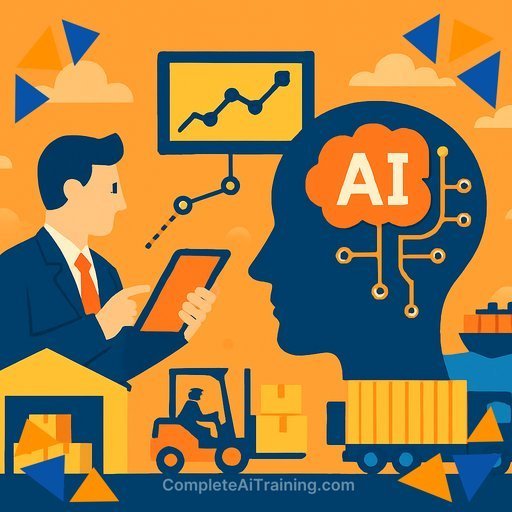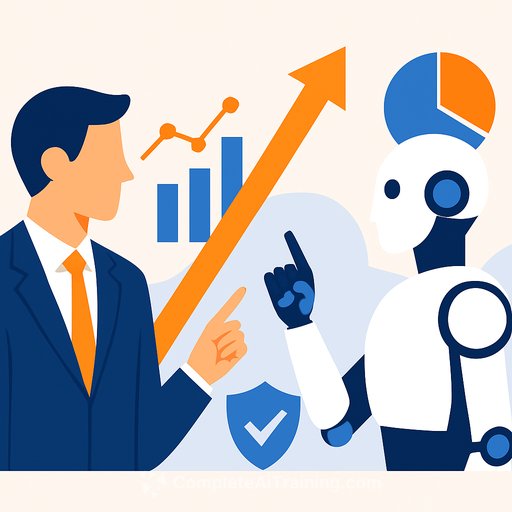Beyond the Hype: How Supply Chain Leaders Turn AI Into Real Business Results
AI talk is cheap. Results aren't. At CSCMP EDGE, leaders from Penske Logistics, NTT Data, and Snowflake shared exactly how to move AI from pilot to performance-and why trust, data quality, and workflow fit beat flashy models every time.
Key takeaways
- Treat AI like a living system: monitor, retrain, and align to changing business conditions to prevent slow performance decay.
- Data quality drives outcomes: without clean, governed data, models produce noise and erode trust.
- Accuracy isn't value: measure success by process improvements and ROI-not model precision alone.
- Fit AI to the workflow: embed insights in the tools people already use so action is effortless.
AI is a living system
Shanton Wilcox of NTT Data led a straight-talking session with Vishwa Ram (Penske Logistics) and Tim Long (Snowflake). The message: AI isn't a one-time launch. It's an organism that needs care.
Ram put it simply: "There wasn't a sudden failure of the model, but there was just a slow liquidation of results over time." That's model drift-performance fading as the business shifts. Without continuous monitoring and retraining tied to business metrics, you find out too late. For reference, see a clear explanation of drift here: Concept drift.
The data foundation comes first
Long's take: the best AI strategy is a data strategy. If your inputs are messy, your outputs will mislead. One customer had design and model numbers in the same column-easy for humans, impossible for AI. The result: incorrect insights and lost credibility.
Give AI every advantage: clear schemas, enforced data contracts, lineage, and active quality checks. If you need a practical framework for doing this responsibly at scale, the NIST AI RMF is a useful reference point: NIST AI Risk Management Framework.
Accuracy doesn't equal business value
Ram shared a hard-won lesson: "Your model can be 99% accurate yet generate zero business value." In one warehouse use case, lab metrics looked great, but defects didn't drop until they fixed a process gap alongside the model.
Translation for managers: tie model metrics to the real system of work. Instrument the process, define the decision, and track downstream KPIs (cost, quality, service levels). Improve the workflow and the model together-or don't expect ROI.
Governance that enables, not blocks
"Poor governance is when everybody does their work out of Excel," Long said. Good governance protects IP and compliance while making data easier to use. It's not bureaucracy-it's scale.
Ram called AI the dessert and governance the broccoli. Penske's approach: Manage, Monitor, Mediate. Catalog assets, monitor quality with business rules and ML, and mediate errors at the source. When people trust the data, they actually use it-and experiments turn into impact.
Fit AI to the workflow (not the other way around)
Penske built a multimodal model to estimate trailer utilization and load stability from images. The secret wasn't model complexity-it was integration. They embedded outputs into Tableau dashboards users already relied on.
That's the pattern to copy: place insights where decisions happen. Don't add one more system to check. Make consuming AI as simple as checking your phone.
Change management and trust
"Building the models is the easy part," Long said. "The hard part is change management." Someone's job will change. If you ignore that, adoption stalls.
Bring business users in from day one. Co-design the workflow, define what "good" looks like, and agree on how the decision gets made. The closer the builders are to the operators, the faster the trust-and the deployment.
The next phase: Agentic AI
Long sees Agentic AI taking on repeatable decisions the way robotics automated repeatable tasks. Think policy-driven agents that act within guardrails, escalate edge cases, and log every decision.
Move thoughtfully: start with narrow, high-volume decisions, define clear SLAs, and keep a human in the loop until confidence is proven. As Ram summed up, "Technology moves fast, but adoption moves at the speed of trust."
A 90-day management playbook
- Pick one process with measurable pain (cost, time, quality) and a clear decision point.
- Define the KPI tree: leading (decision quality, cycle time) and lagging (savings, service level) metrics.
- Clean the inputs: create a simple data contract, fix one schema issue per week, and set up basic quality checks.
- Ship a thin slice: one decision, one user group, embedded in an existing tool (e.g., BI dashboard, TMS, WMS).
- Monitor drift and business impact weekly; schedule a retrain cadence based on threshold breaches.
- Stand up light governance: access control, lineage tracking, and an approval path for model changes.
- Upskill the team: short, role-specific training for managers, analysts, and operators.
- Scale only after trust: expand to adjacent decisions once adoption and ROI are steady for 4-6 weeks.
FAQ
- What does it mean to treat AI as a "living system"?
Continuously monitor, retrain, and govern models as conditions change. This prevents performance decay and catches drift before it hits results. - Why is data more important than algorithms?
Bad or incomplete data leads to bad outcomes. Quality, consistency, and governance determine whether insights are accurate and actionable. - How should companies measure AI success?
By business impact. Track cost savings, throughput, quality, service levels, and employee adoption-not just model accuracy. - Is governance a barrier to innovation?
No. Good governance enables safe, confident use of data and models at scale while protecting compliance and IP. - How can AI adoption be accelerated?
Integrate outputs into existing tools, involve business users early, and align projects to real workflows instead of introducing standalone systems.
Where to go next
If you're leading a team and want focused upskilling by role, explore curated learning paths here: AI courses by job. To see new and relevant options for managers, check the latest programs: Latest AI courses.
Your membership also unlocks:






